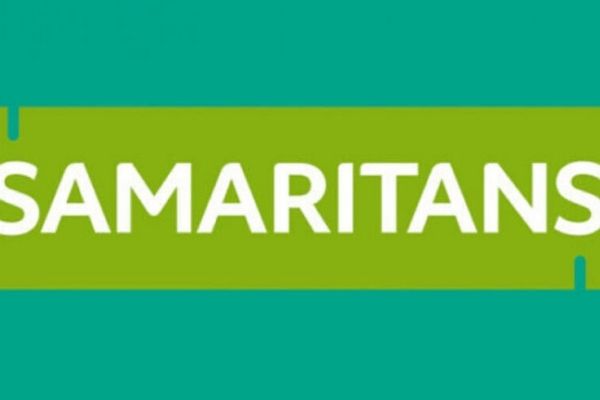Insights
INSIGHTS
All Topics
My Account
How to nail your digital recruitment process
05 Nov 2020by Paul Rubens
Follow these digital steps to find the best digital candidates for your charity
Recruiting charity employees with the right digital skills is challenging at the best of times. But thanks to the COVID-19 pandemic, you may find it harder than ever to recruit the people you need.
Basic parts of the recruitment process such as inviting candidates in for an interview may no longer be possible because of safety concerns around travel or because most or all of your charity staff are now working from home.
That’s why many charities are now turning to digital recruitment processes to attract and interview candidates and onboard them remotely.
We walk you through the digital recruitment process and signpost a few other resources along the way.
Identifying needs
The first part of any recruitment process is to identify the vacancies in your charity that need filling.
Since many charities are in the process of digitising the way they operate, it’s likely that many of these vacancies will relate to people with particular digital skills that your organisation requires but currently lacks. Some of the most common jobs that the charity sector need filling include:
- Digital fundraiser
- Digital service delivery manager
- Digital content editor
- Social media manager
- Database administrator
- Web developer
- Cyber security specialis
Looking to volunteers
One possible way to fill any identified vacancies is to find a suitably qualified volunteer to do the job.
A good way to recruit volunteers with the right digital skillset is to use a volunteering platform such as:
Do-it.org - This volunteering matching website allows charities to post for specific voluntary roles. Access to tech, including a home computer, or previous experience in digital can be added into the advert, ensuring that suitable volunteers apply for relevant roles.
Reach Volunteering - This is another matching website, where charities and non-profit organisations can advertise specific volunteering needs. For volunteers, the search function narrows opportunities by digital or online working environments.
It may also be possible to access the digital skills you require at very low cost or for free using a pro-bono service such as Datakind, which offers charities the services of highly skilled digital data scientists to work on digital data projects without charge.
Finding paid candidates
The traditional digital method for finding candidates is to use online job boards or recruitment websites. These can be highly effective, and ones to consider include:
Charity Job - This site hosts advertisements for both volunteers and paid roles. Key search terms can be attached to adverts so the right people can search and apply for volunteer and paid jobs.
Monster - Monster is a popular digital recruitment platform which also makes it easy for companies to post their job vacancies on social media platforms including Facebook and Instagram.
Indeed - This is the largest UK job board with hundreds of new vacancies posted every minute.
WorkInStartups - The startup sector attracts many people who have digital skills and who change jobs frequently. For that reason, this job platform could be a good place to find people with specific digital skills.
Charity Digital Jobs – Listing the vacancy with Charity Digital Jobs can be a great way to find candidates from our audience of charity digital professionals.
Other ways to find candidates include recruitment advertising at university and college careers offices (because students often have good digital skills) and posting vacancies on your charity’s own website and social media feeds.
One final way that should not be overlooked is to attend virtual job fairs. These work in a very similar way to a traditional job fair, but within an online environment.
These online events allow you to meet large numbers of potential employees from a large geographical area, enabling you to get an idea of what sort of people are "out there" while also providing an opportunity for you to present your charity to candidates who may not otherwise think of working in the charity sector.
Digital interviewing
Once you have sourced a satisfactory number of digital candidates the next step is to interview them, and many organisations including charities are turning to virtual job interviews. A recent Gartner survey found that 86% of organisations are now conducting virtual interviews as part of their hiring process.
You can carry out live virtual interviews using basic video conferencing software such as Microsoft Teams or Zoom, (both available through Charity Digital) or GoToMeeting. The benefit of this approach is that it is low cost or free.
But a more sophisticated approach is to use a dedicated virtual interview platform. You can use one of these platforms to carry out one-way interviews to narrow the number of candidates to a shortlist.
A one-way interview involves each candidate videoing themselves answering a set of standard interview questions. You can review a large number of these recordings in a very short time, making one-way interviews extremely time-efficient.
Good virtual interview platforms then allow you to shortlist candidates for live video interviews, which the candidates can schedule by picking timeslots that you make available.
Good digital interview platforms include:
Digital interview questions
During one-way or live digital interviews, candidates answer questions to help you decide if they are the right person for the job. That begs the question of what questions you should ask.
The precise questions will depend on the role you are recruiting for, but in general you can use a digital interview to ask five broad categories of questions:
Behavioural questions, which can help you learn about the candidate’s personality and whether they are likely to fit with the culture of your charity.
Situational questions, which can reveal how the digital candidate might perform their role.
Qualification questions, which seek to establish what training or specialist knowledge they can bring to the role.
Knowledge and experience questions, which seek to establish whether they have the ability to carry out the role.
Questions designed to elicit specific types of information, such as: "Tell me about a project you have been involved in that didn’t work or did not go as well as you expected, and why that happened."
The purpose of this question is to find out how the candidate reacted to failure. Did they blame others for the project’s failure, or are they keen to tell you what they learned from the mistake?
Digital onboarding
The final part of the digital process is digital onboarding: introducing the new recruit to teammates, ensuring they have all the resources (including computer logins and passwords) to do their job, and integrating them with your charity and its processes and culture so that they can become a productive staff member.
Many organisations carrying out digital onboarding during the pandemic use tools such as Slack or Microsoft Teams to make it easy for newly onboarded staff to ask questions using chat, voice or video calling, and for other team members to offer help and share documents.
Our Events
Charity Digital Academy
Our courses aim, in just three hours, to enhance soft skills and hard skills, boost your knowledge of finance and artificial intelligence, and supercharge your digital capabilities. Check out some of the incredible options by clicking here.

















